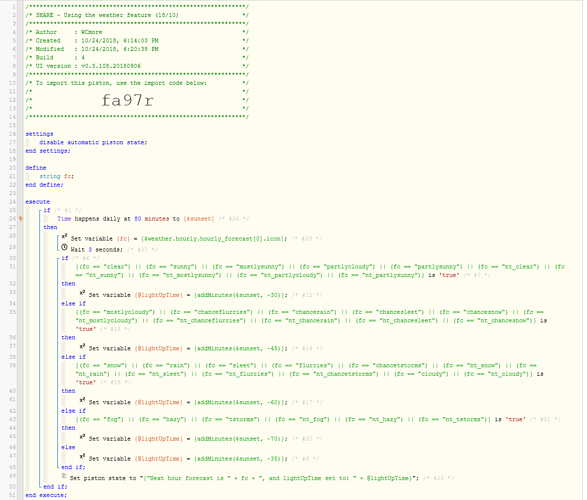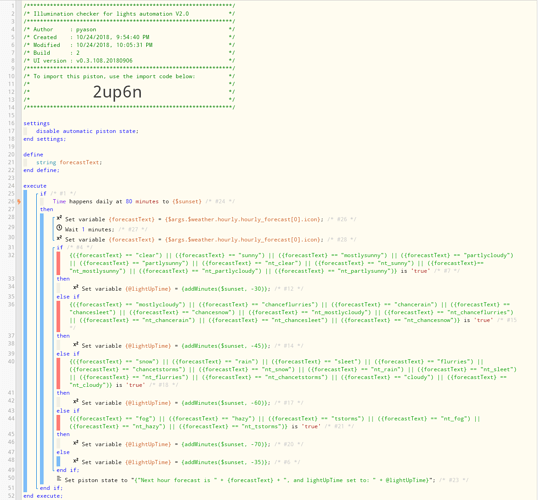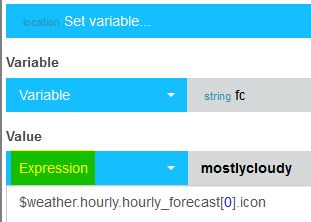Ok, first thing that needs to be stated. Weather underground is very unreliable when it comes to certain reporting, in my opinion. The information is being supplied from airports, and private users. If a particular station does not repor info fast enough, or enough info your results will vary. That is from what I have found at least.
Now, precipi is imperial or inches, precepm is metric or mm I believe.
There is also a precip, not sure if that is suppose to be the qpf or not.
I guess, since current conditions qpf from today seems to be a little more accurate, I would set up a piston to grab a snapshot at 11:59pm and have it save that to a variable named {yesterdayRain}.
**** Shameful plug here **** I wrote a custom device handler that allows you to monitor up to 3 locations, besides your home hub location. You can get the info by zip, lat/long, state/city. And sometimes airport Cor, or actual weather station code will work pws;{code}
It also lets you gather just about all the different data via webcore drop down for the physical device attributes. I always hated trying to remember all the different syntax to get what I wanted. So now it’s point and click for me
Let me know if you want link to device handler it’s on github. I basically adapted weather station tile device handler and added locations and exposed more of the weather condition data to the device handler









